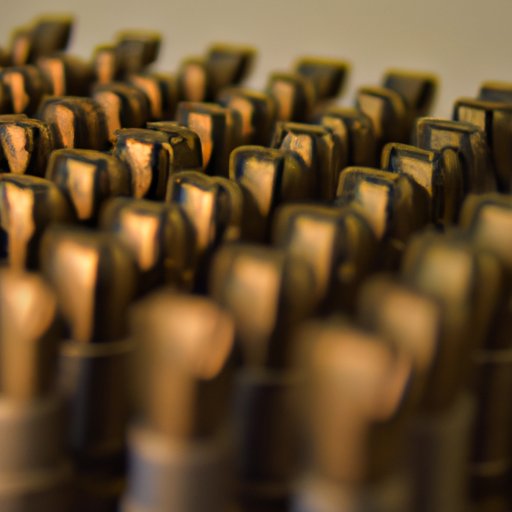Introduction
Hunting is a popular recreational activity that involves the use of firearms to hunt game animals. While many hunters are familiar with the basics of firearms, they may not be aware of the importance of selecting a firearm with the right amount of firepower for their particular hunting situation. In this article, we will explore what level of firepower is needed for hunting and how different types of firearms can affect a hunter’s success.
Definition of Firepower
At its most basic level, firepower refers to the amount of force or energy a firearm is able to generate when it is fired. This is usually measured in terms of muzzle velocity, which is the speed at which a bullet leaves the barrel of a gun, as well as bullet weight and caliber. The higher the muzzle velocity and the heavier the bullet, the more powerful the firearm is said to be.

Overview of Different Types of Firearms for Hunting
There are several different types of firearms used for hunting, including shotguns, rifles, and handguns. Shotguns are the most common type of firearm used for hunting small game, such as rabbits, ducks, and squirrels. They are typically loaded with birdshot, a type of ammunition made up of multiple small pellets, which allows the shooter to spread out the shot pattern and increase their chances of hitting their target. Rifles are typically used to hunt larger game, such as deer and elk, and are usually loaded with single bullets or slugs. Handguns, on the other hand, are designed for close-range shooting and are most often used to hunt small game or for self-defense.
Evaluating the Suitability of Different Types of Firearm for Hunting
When choosing a firearm for hunting, one of the first decisions a hunter must make is whether to choose a lever-action or semi-automatic weapon. Lever-action weapons are manual-loading firearms that require the user to manually cycle the action between shots. Semi-automatic weapons, on the other hand, use the force generated by each shot to automatically reload the chamber, allowing the user to fire multiple shots without having to manually reload each time. Both types of weapons have their advantages and disadvantages, but in general, semi-automatic weapons tend to be more reliable and accurate than lever-action weapons.
Pros and Cons of High-powered vs Low-powered Guns
Another consideration when choosing a firearm for hunting is whether to select a high-powered or low-powered gun. High-powered guns, such as rifles and handguns, are typically more accurate and have a longer range than low-powered guns, such as shotguns. However, high-powered guns also produce more recoil, making them more difficult to control and less suitable for novice shooters. Low-powered guns, on the other hand, produce less recoil and are easier to handle, making them better suited for inexperienced shooters. Ultimately, the decision of whether to opt for a high-powered or low-powered gun should be based on the type of game being hunted and the skill level of the shooter.

Examining the Impact of Increasing Firepower on Hunting Outcomes
Increasing the firepower of a firearm can have a significant impact on a hunter’s success. Higher muzzle velocities and heavier bullets result in increased accuracy, greater range, and increased stopping power. This means that a hunter is more likely to hit their target and have a better chance of killing the animal quickly and humanely. Additionally, increased accuracy and range allow a hunter to take shots from farther away, reducing the risk of injury to themselves or their hunting companions.
Investigating the Role of Ammunition Selection in Determining Appropriate Firepower Levels
In addition to selecting the right type of firearm, it is also important to choose the right type of ammunition. Different calibers and gauges of firearms require different types of ammunition, and selecting the wrong type can significantly reduce a firearm’s performance. For example, using a .22 caliber rifle to hunt large game would not be effective because the size of the bullet would not provide enough stopping power to kill the animal quickly and humanely. Conversely, using a high-powered rifle to hunt small game could result in excessive damage to the animal, making it unsuitable for consumption.

Understanding the Necessity of Firepower for Hunting Different Types of Game
The type of game being hunted will also influence the amount of firepower needed. For example, small game such as rabbits, squirrels, and birds require less firepower than larger game such as deer and elk. Smaller game can typically be hunted with a low-powered firearm, such as a shotgun or handgun, while larger game requires a high-powered rifle to ensure a quick and humane kill. Additionally, some states have laws regulating the minimum caliber and muzzle velocity required for certain types of game, so hunters should always check their local regulations before heading out.
Conclusion
Selecting the right level of firepower for hunting is an important part of ensuring a successful and safe outing. It is important to consider the type of game being hunted, the skill level of the shooter, and the type of ammunition being used when deciding how much firepower is necessary. By understanding the role of firepower in hunting, hunters can maximize their chances of success and ensure a safe and enjoyable experience.


